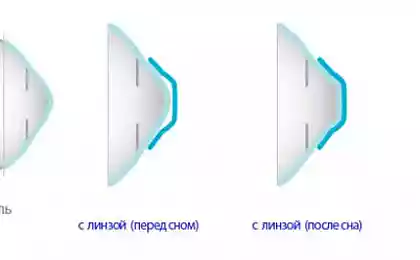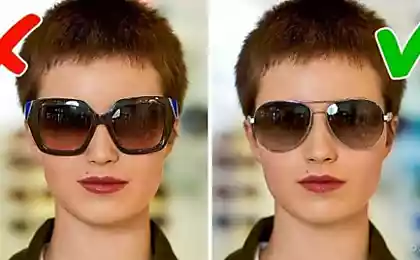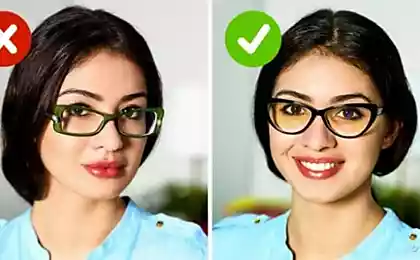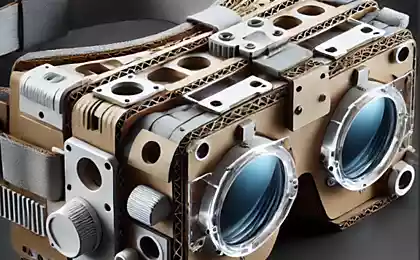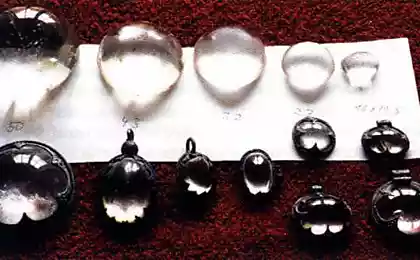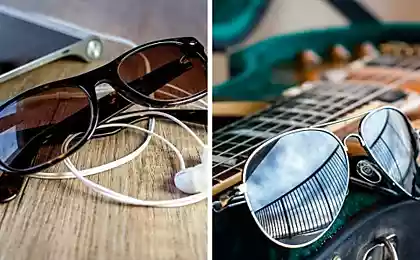2973
Part 4.1 restored sight. From points to the excimer laser

I apologize to all those who have been waiting for this article. Preparation of materials requires a lot of time and labor. In this article I will try to tell about all vision correction procedures that exist at the moment. We will go the way of the first points of the XIII century to modern laser correction methods such as femto-LASIK and PRK.
If you have not read the previous articles cycle, then I would recommend to read in the first place with the second part. It is here that elaborates on the basic visual and biological bases of our vision. The volume of the article to be very large, so I decided to split it into two parts for ease of reading.
All who are interested - welcome under the cut.
Previous parts h4>
Part 1. Unboxing VisuMax - femto laser vision correction
Part 2. How many Mbit / s can be passed through the optic nerve and the retina at what resolution? A bit of theory
Part 3. Meet - laser named Amaris. Moving and first awakening VisuMax
Contents:
problems and their solutions
Refraction normal point of impact on the problem Simple solutions. Add lens Points Eye < a href = "# ancAmbliopya"> The problem is different eye Answer the questions
Myopia after 45 years
In the next part:
Change the cornea
Features method Orthokeratology keratotomy LASIK femto-LASIK PRK trans-FFR ReLEx SMILE ReLEx Flex When the cornea is not enough
Features method The implantation of phakic lenses Implantation of artificial lenses - IOL
Refraction normal h4>
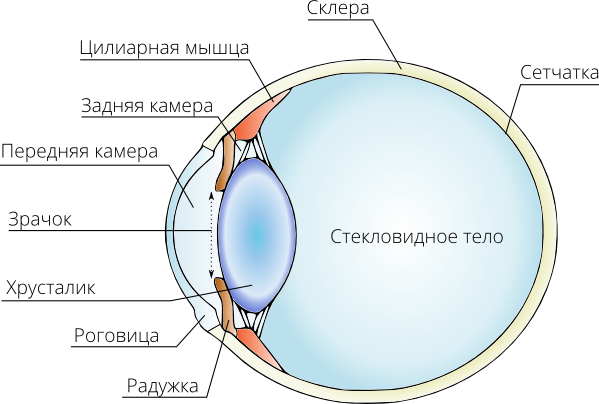
Eye - a complex optical system. The main elements that are directly involved in the focus of the image on the retina:
The cornea Front Camera The pupil as a diaphragm Rear Camera The lens Vitreous other i> elements that do not cause offense. For example, an eye with myopia increases along its optical axis. Putting on glasses, we adjust the image, focusing it on the retina, but the shape of the eyeball is still stretched. point of impact on the problem h4>

We can identify several areas where you can adjust the refraction at minimal cost:
Add a corrective lens glasses Add a corrective contact lens Change the curvature of the cornea phakic lens implanted in the anterior or posterior chamber of the eye li > Replace the lens with an artificial one with another optical power Points in the Middle Ages h4>

History points started a long time ago. The optical properties of rock crystal and other minerals have been used since ancient times for increasing items. Optical lenses made of rock crystal, archaeologists found at excavations of Troy, Crete, in the Syrian desert, under the Mesopotamian hills. On the use of "crystal eye" wrote the ancient Greek philosophers. The Roman historian Pliny the Elder, who died during the eruption of Vesuvius, said that "the Emperor Nero watched the gladiator fights through emerald", ie emerald lens.
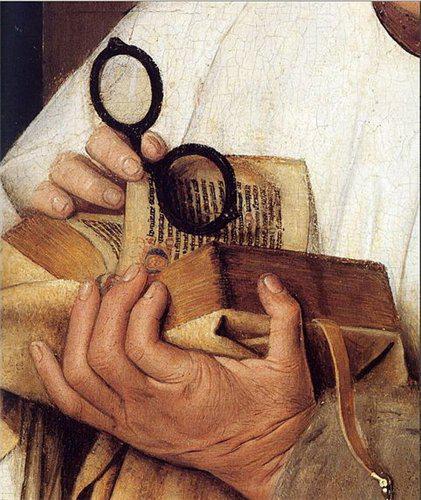
However, all these artificial lenses were not of a medical nature and not intended to vision correction. The exact location of points invention is not known. Most researchers agree on the fact that this discovery took place simultaneously in several countries of central Europe. Despite this, a lot of historical evidence points to the Italy of the XIII century. Master glassblowers of that era were renowned for his works of glass. It is likely that because of them, this attribute has spread to the rest of the world.
There is evidence that the idea of creating points belongs to the Florentine monk and dated 1280 year. Near one of the Florentine church is his grave with the inscription: "Here lies Salvino Armati, the inventor points».
Points while cost is very expensive, but usually commoner had nothing to read. Most of them were illiterate, and the mass was still waiting for his book-printing Gutenberg.
Modern sunglasses h4>

Now use the glasses all the achievements of modern technology. This rim of titanium alloys with shape memory polymers and lungs as eyeglass lenses, which due to its high refractive index glasses make very thin. In principle, it can be considered as points method for correcting refractive disorders, which allows you to achieve good visual quality without affecting the organ itself view.
I have to mention the popular myth that the points can accelerate the development of myopia and wearing them you need to avoid as much as possible. As we already know, the cause of myopia in the majority of cases - an increase in the linear size of the eyeball. Adding points only allows you to properly focus the light beam. The shape of their eyes wearing no effect. Moreover, the refusal to wear glasses with severe myopia leads to constant overload of the ciliary muscle of the lens, which has struggled "to adjust the image normally", but can not because of rough inconsistencies focal length of the eye and its features. All this can lead exacerbate the problem spasm of accommodation.
Very often I hear the concept: "I went without my glasses and saw something. Wore glasses, looked like half a year, now I can not do without them, though before it was bearable. " Blurred vision here - misleading. The human brain is a very flexible tool. Of two series of frames "video" disgusting quality he manages to extract nuggets of useful information. All short-sighted recognition of familiar friends on the silhouettes of the motion, etc. When a person wears glasses for a long time, the brain discards unnecessary "modules" to save resources. That is why a man so hard to break the habit of points after. Here rather raises the question of whether to do it at all.
You can have different attitudes to expensive and cheap rims, but I definitely urge not to skimp on quality lenses to them. As well as for good optics and lenses of good producers can not cost very cheap. Especially if you want to correction of astigmatism compensation. A nice bonus is the presence of additional coating reduces chromatic aberration, increases strength, etc.
Choosing a lens, it should be remembered that the thickness of the lens other things being equal depends on the refractive index of its material. That is, by high-index lenses, you can get a full correction with a much thinner. The truth in this case will have to put up with increased chromatic aberration, although the manufacturer and is trying to deal with it. The reason for these aberrations - the difference in the refraction of light of different wavelengths.
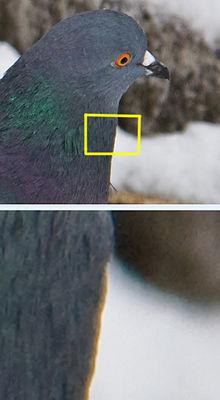
An example of chromatic aberration.
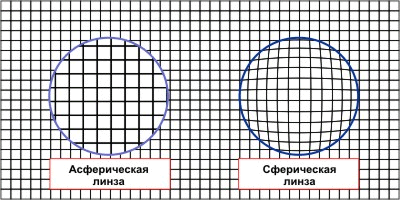
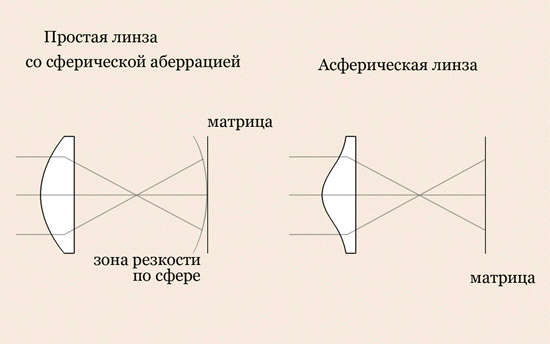
It is worth to use single or double aspheric optics. Such lenses can significantly reduce geometric distortion at the edges of the lens. Of course, this too will increase the final price. For myself, I stopped on the lens of the Japanese company Hoya. They cost me 2 times cheaper than those from Zeiss, in no way inferior in quality.
Eye h4>
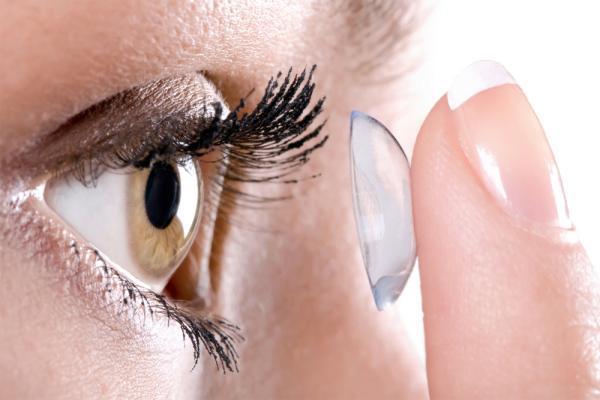
Contact lenses as a class were a long time. Thoughts of them expressed by Leonardo da Vinci, and the first incarnation of blown glass created a German glassblower August Müller 1887 A year later, in 1888, Adolf Fick, ophthalmologist, has applied this invention into practice. Initially, rabbits, and then on itself then already volunteers. Materials changed and improved, but in the process it became unpleasant feature of contact lenses - they worsen gas exchange cornea.
The cornea - the transparent tissue and can not afford to be sprouted vessels for nourishment. Therefore, the exchange of waste products and getting breathing oxygen it carries through the washing of the lacrimal fluid and fluid circulation in the anterior chamber. Contact lenses that process does not contribute, as if the producers do not practiced in the slogan "80% air", "first * ** breathable contact lenses" and so on. Experience suggests that patients who chose the contact lens as a method of solving the problem of myopia, inevitably come to the problems with the cornea - keratitis, dry eye syndrome, increase the chances of infection and contact number of other problems. For example, correction is required before the laser break wearing lenses for at least 2 weeks. And that, in the absence of other health problems of the cornea.
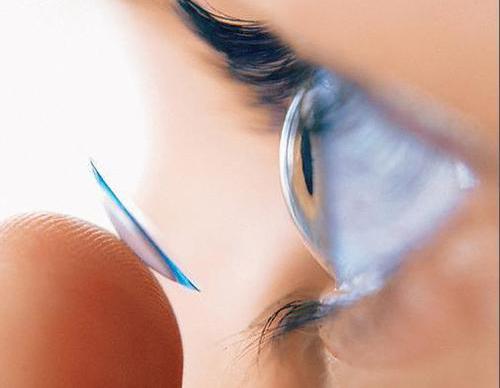
Contact lenses are divided into hard and soft
Hydrogel lenses are divided into groups, depending on the water content:
lenses with low water content (& lt; 50%) lens with an average water content (about 50%) lenses with high water content (& gt; 50 %)
Silicone hydrogel lenses have more optimal characteristics and have no relation between the water content and Dk. The ability of the oxygen transmissibility of a contact lens is characterized by a special coefficient Dk / t (Dk - oxygen permeability of the lens material and the thickness t of the lens center). For hydrogels Dk / t is typically in the range 20-30 units. This is enough for daily wear. To the lenses can be left eyes at night, requires much greater significance. Silicone hydrogel contact lenses have a Dk / t of the order of 70-170 units. Generally night wearing - a huge problem. In the closed-century oxygen concentration drops significantly. If we add to this the contact lens, the cornea will suffer from oxygen starvation. Therefore, if you are not one in a dark forest, surrounded by trees and sea urchins, and a bag with the solutions was not dragged raccoons, it is highly advisable not to use the lens at night. Справочник the gas permeability of different lenses (thanks f1ac )

A very important issue is the correction of astigmatism. If a person has the right cornea, symmetrical shape, the problems with conventional contact lenses had no. The orientation of the lens relative to the axis of such symmetry is not important. However, there is sometimes in addition to myopia asymmetry cornea or lens, which results in astigmatism. In these patients, the orientation of the lens is very important. The main task - to compensate for the natural asymmetry of the respective axes. Previously, such patients administered only hard contact lenses because of their shape stability and ease of orientation. Unfortunately, the oxygen transmission of such lenses is minimized. Modern materials have allowed to create soft toric lenses i>, which themselves take the required position on the cornea, rotating under the force of gravity.
There are different methods of stabilization lens:
periballast - lens has a zone of thinning on top and bottom edges are located under the eyelids, which holds the lens in place. prism ballast - thickening of the bottom of the lens, which is under the influence of gravitational forces cause the lens to be in the right position. But when the change of body position from vertical to horizontal and vice versa lens under gravity also moves. trunkatsiya clipping or - in the lower part of the lens is cut segment. Sectioning lens is located on the edge of the lower eyelid.
The problem is different eye h4>
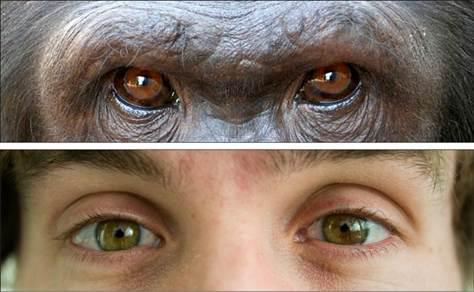
So evolutionarily developed, that we have binocular vision. All primates eyes positioned on the front of the skull and parallel to each other. Usually binocular vision - a sign of predators that need to accurately determine the distance to the victim, to calculate the jump. In herbivores eyes are spaced on opposite sides of the skull, to ensure maximum visibility and protection against stalking predator. In the case of three-dimensional vision of primates is usually not to attack the victim, and to determine the exact distance to jump from branch to branch. Fallen from a height of monkeys usually do not reproduce or transmit genes inherited.
How does this relate to today's topic? The most direct. "Gluing" the two slightly different images into one three-dimensional - a feature that is sewn in our brain at the level of instinct. However, if the image varies with different eye more than necessary, the "program" can not collect all together. This phenomenon is called amblyopia refractive amblyopia i>. If a patient has one eye -1.5 D, and the second -5.75 D, the images are too different to compare. Moreover, in such a situation will not help points as spaced apart from the eye and introduce additional distortions.

The standard rule of vision correction - no more than 3 diopters difference between the lenses for adults and 4 diopters for children. These figures are not absolute dogma and may vary depending on individual tolerance. Contact lenses are practically devoid of this disadvantage, as it directly adjacent to the cornea and does not have an air gap, and hence the additional distortion. Therefore, when a significant difference in diopters between the eyes are the method of choice of options is not operating.
Additional information: myopia after 45 years h4>
A small digression. In the previous parts I asked why the men who were myopic, after 45 years of seeing close better. With age, the range of accommodation is shrinking. However, short-sighted, this range is shifted toward the close objects. Accommodation, if simplistic - the ability of the lens to change its curvature to focus at different distances.

Vector sources to everyone h4>

If you liked my illustrations - all the sources available in the vector (Inkscape).
License CC BY-SA 3.0 (CC Attribution - Share Alike)
Sources at Google Drive
To be continued ... h4>
Source: habrahabr.ru/post/218001/
You know how the connection was established employees of the Paralympic Games?
A new algorithm for recognizing images from Google is able to recognize CAPTCHA to within 99, 8%














